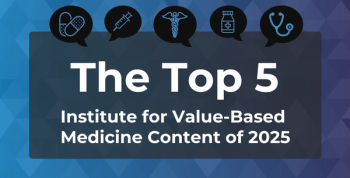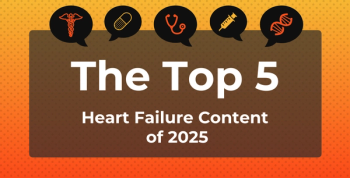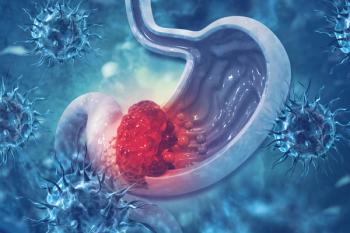
High BMI Drives Worldwide Surge in Ovarian, Uterine Cancer Cases
Key Takeaways
- The global burden of ovarian and uterine cancer due to high BMI has increased significantly from 1990 to 2021.
- Age-standardized rates for uterine cancer rose post-2007, while ovarian cancer showed regional disparities in trends.
Global ovarian and uterine cancer cases due to high BMI have risen sharply over the past 30 years, especially in low- to middle-income sociodemoraphic regions.
The global burden of
Assessing the Burden of Ovarian and Uterine Cancer Attributable to High BMI
While high BMI is a well-established risk factor for these cancers, the global, regional, and national burden attributable to high BMI remains underexplored. To address this, the researchers quantified trends and disparities in ovarian and uterine cancer linked to high BMI from 1990 to 2021 among women between the ages of 20 and 49.
They estimated mortality, incidence, and disability-adjusted life-years (DALYs) attributable to high BMI across different locations and time periods. The researchers also calculated age-standardized rates (ASRs) and analyzed temporal trends through estimated annual percentage changes (EAPCs). Lastly, they assessed regional and national disparities using sociodemographic index (SDI) classifications and forecasted future trends using exponential smoothing (ES) and autoregressive integrated moving average (ARIMA) models.
This was accomplished using the Global Burden of Disease (GBD) 2021 data set, which
The Rising Global Burden of Ovarian and Uterine Cancer Linked to High BMI
Overall, the global number of uterine cancer cases attributable to high BMI has steadily increased over time. DALYs, deaths, years lived with disability (YLDs), and years of life lost (YLLs) rose from 372,641 (95% uncertainty interval [UI], 264,224-500,197), 13,893 (95% UI, 9874-18,653), 27,755 (95% UI, 17,250-40,423), and 344,887 (95% UI, 243,486-461,586) in 1990 to 880,147 (95% UI, 631,165-1,160,930), 33,134 (95% UI, 23,878-43,299), 88,263 (95% UI, 56,066-125,024), and 791,884 (95% UI, 567,897-1,041,295) in 2021, respectively.1
ASRs for most indicators fluctuated slightly before 2007 and increased thereafter, except for YLDs, which showed a steady upward trend. Corresponding EAPCs were 0.86 (95% UI, 0.68-1.05) for DALYs, 0.82 (95% UI, 0.62-1.03) for deaths, 1.97 (95% UI, 1.79-2.15) for YLDs, and 0.76 (95% UI, 0.57-0.94).
Similarly, global ovarian cancer cases due to high BMI increased over time. DALYs, deaths, YLDs, and YLLs increased from 1,888,874 (95% UI, 38,401-355,691), 6850 (95% UI, 1423-12,865), 5269 (95% UI, 1012-10,441), and 183,605 (95% UI, 37,368-345,920) in 1990 to 477,248 (95% UI, 113,449-840,002), 17,344 (95% UI, 4141-30,810), 14,419 (95% UI, 3284-26,704), and 463,099 (95% UI, 110,442-815,411) in 2021.
ASRs generally increased, with temporary declines between 2009 and 2010 and again between 2014 and 2015. Corresponding EAPCs were 1.09 (95% UI, 0.93-1.25) for DALYs, 1.03 (95% UI, 0.85-1.21) for deaths, 1.3 (95% UI, 1.14-1.45) for YLDs, and 1.08 (95% UI, 0.92-1.24) for YLLs.
Age-specific trends mirrored global patterns. For uterine cancer, ASR levels were low and stable among women between the ages of 20 and 34 and highest in those aged 45 to 49, with growth rates increasing with age. Ovarian cancer showed minimal changes in women under 39, aligning with global trends. However, changes among those aged 45 to 49 were more volatile, with a downward trend between 2005 and 2015.
Burden also varied across SDI regions. Uterine cancer ASRs rose steadily in high, middle, low-middle, and low SDI regions, while high-middle SDI regions fluctuated until 2007, followed by a zigzagging rise. Case numbers followed similar patterns, except for high-middle SDI regions, which showed irregular intervals.
For ovarian cancer, ASRs steadily increased in middle, low-middle, and low SDI regions. In contrast, they fluctuated slightly in high-middle SDI regions and decreased in high SDI regions after 2002. Case numbers generally rose across all SDI regions, with the steepest slope in low-middle SDI regions.
The researchers performed a hierarchical cluster analysis of ASRs across GBD regions, revealing regional differences in burden. For uterine cancer, 5 regions showed significant decreases: Tropical Latin America, Andean Latin America, World Bank Upper Middle Income, Southern Latin America, and Central Asia. Meanwhile, many others showed significant increases, including South Asia, Southern Africa, and the Eastern Mediterranean.
For ovarian cancer, 12 regions demonstrated significant decreases: North America, high-income North America, Western Europe, World Bank High Income, European Region, World Bank Europe and Central Asia, Europe, Region of the Americas, America, Advanced Health System, Commonwealth High Income, and Australasia. Conversely, many other regions showed significant increases, like Central Sub-Saharan Africa, Southeast Asia, and Andean Latin America.
Predictions and Impacts of High BMI–Linked Ovarian and Uterine Cancer
Looking ahead, the researchers used ARIMA and ES models to predict the future burden of both cancers attributable to high BMI. Both models indicated that uterine cancer case numbers are expected to rise, while the ASR remains largely stable. For ovarian cancer, ARIMA predicted increases in all indicators except the number of deaths. Similarly, the ES model predicted increases in all indicators except the number and ASR of deaths, which were stable or declining.
“These results suggest that the burden of uterine cancer or ovarian cancer due to high BMI is still increasing, and there is an urgent need to develop effective measures to mitigate its impact on human health,” the authors wrote.
Lastly, they acknowledged the study’s limitations, noting that data quality varies across regions. This issue is particularly pronounced in low SDI countries, where underreporting and limited health care could underestimate the true burden. Still, the researchers expressed confidence in their findings and emphasized the need for further research.
“Future research should investigate subtype-specific disease burdens, such as differences between endometrioid and serous carcinomas, as well as the potential impact of emerging therapies, including glucagon-like peptide-1 agonists, on cancer incidence,” they concluded.
References
- Han H, Hou D, Lin Q, Hao X, Zhang Z, Peng X. Global burden of ovarian and uterine cancers attributable to high body-mass index in 204 countries and territories, 1990-2021. Front Oncol. 2025;15:1623926. doi:10.3389/fonc.2025.1623926
- Murray CJL; GBD 2021 Collaborators. Findings from the Global Burden of Disease Study 2021. Lancet. 2024;403(10440):2259-2262. doi:10.1016/S0140-6736(24)00769-4
Newsletter
Stay ahead of policy, cost, and value—subscribe to AJMC for expert insights at the intersection of clinical care and health economics.







































